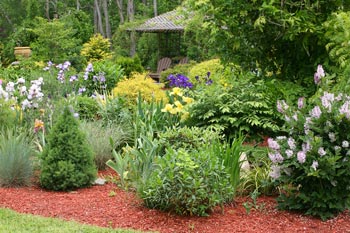Dividing perennials plants

Have you noticed your Iris or Black-Eyed Susan looking a little pale or your prize Chrysanthemum beginning to outgrow its space? Is your Daylily, Peony, Primrose, Poppy or Aster dying out in the center? If so, fall is the right time to divide and replant these or other spring and summer blooming plants that grow back year after year.
Dividing perennials that are established during autumn months is the easiest and quickest way to make them healthier – while gaining new plants for your garden or for sharing with your neighbors. The best candidates for division are perennial plants that have large, healthy clumps and have been in the ground several years.
What you need to divide or plant perennials
- Garden Tools: spade or shovel, heavy-duty sharp knife or pruning saw, pruning shears, scissors and water hose.
- Plants: Asters, Daylilies, Bee Balm, Chrysanthemums, Goldenrod, Iris, Salvia, Veronica, Peony, and many other perennials do well when divided during autumn.
- Water and Mulch: Water thoroughly and cover soil with mulch made of chopped leaves, wood chips or evergreen boughs.
To divide your perennials:
Try to divide dormant perennials on a cloudy day when the weather is dry, making sure each plant division has more roots than shoots.
- Use a shovel to dig deep all the way around the plant and gently lift out of ground with your hands.
- Keep as much of the root system intact as possible. If working with a very large clump, force the shovel under the root ball to loosen before you lift plant.
- Shake off loose soil and wash the crown with a garden hose until you can clearly see roots and crowns.
- Each division should have two to five strong shoots with ample roots attached. Divide the plant into smaller clumps either by hand, or with a knife or spade. Roots of some older clumps can be so tough that you'll need to chop them with a hatchet.
- Remove any dead areas and cut back remaining foliage to half the height of the original clump. Tall plants like Iris should be cut so the outer leaves are slightly shorter than the center leaves.
- Replant divided perennials promptly so roots don't dry out. Set plants out at the same depth as before, making sure to replant one division back into the original hole.
- Dig the hole slightly larger than the division to allow space for the new plant to spread out its roots.
- To finish up, water thoroughly and apply mulch to keep soil from drying out and to protect the plant's root system.
- Keep the soil moist until your new plant becomes established. Wait until spring before adding fertilizer.


